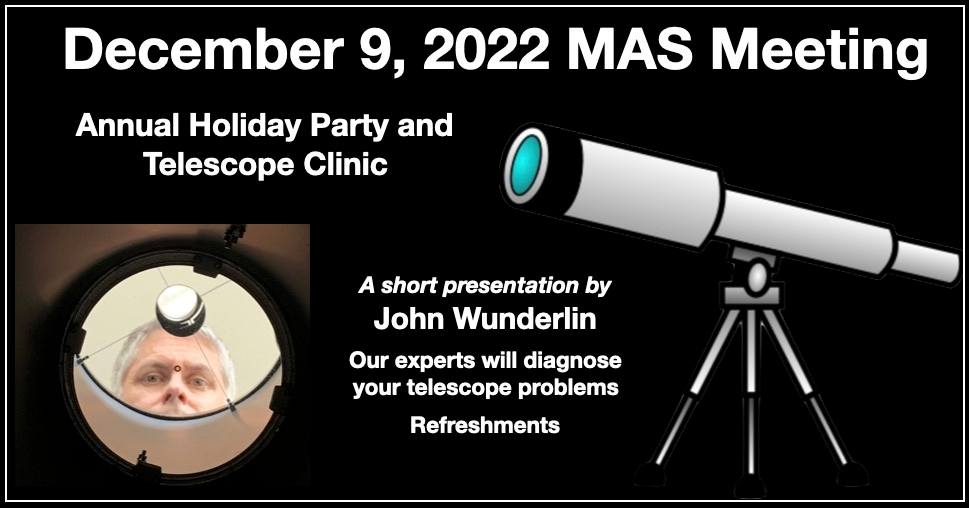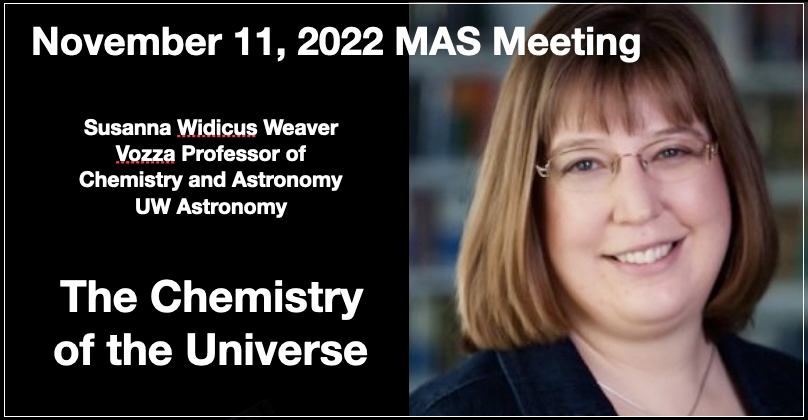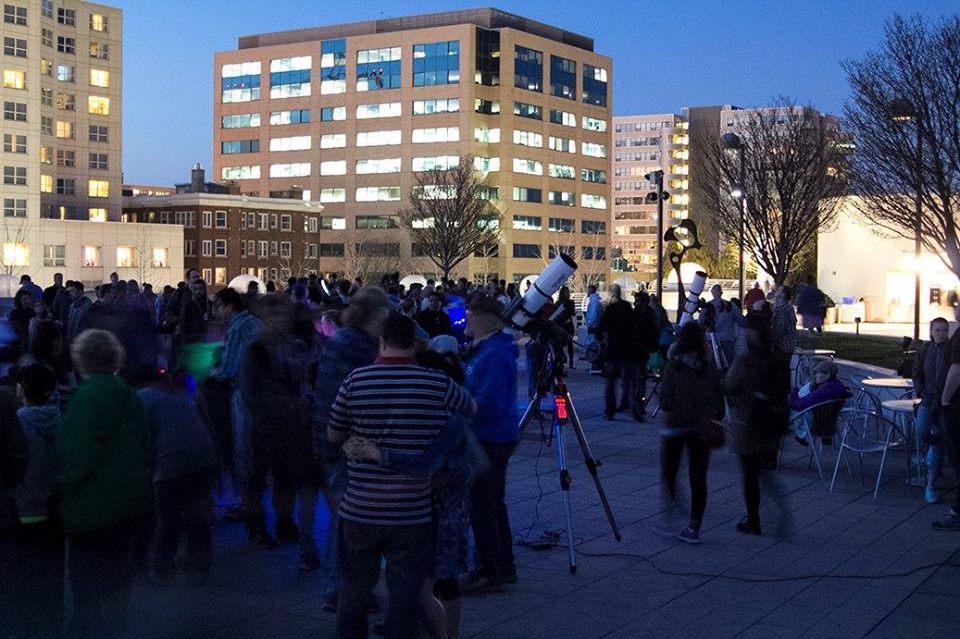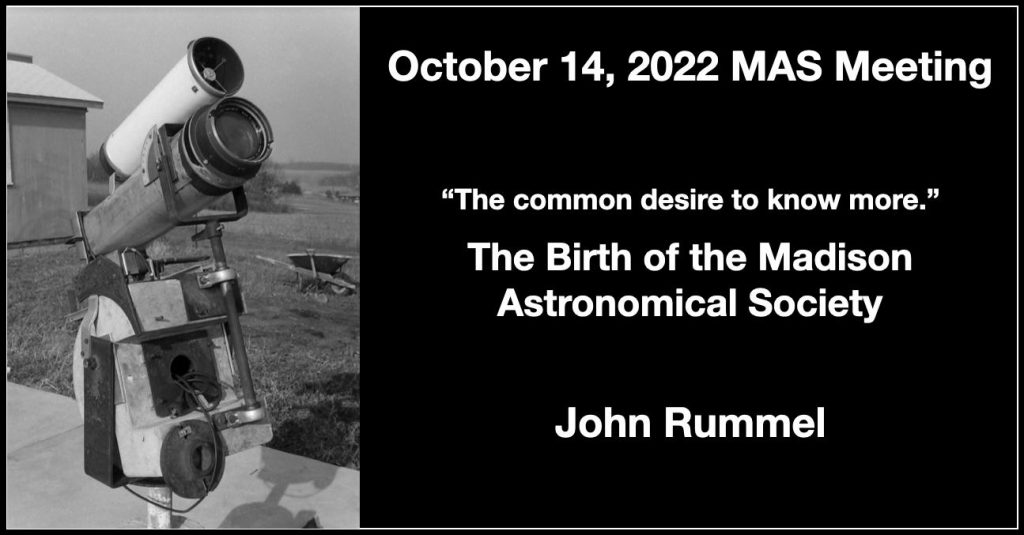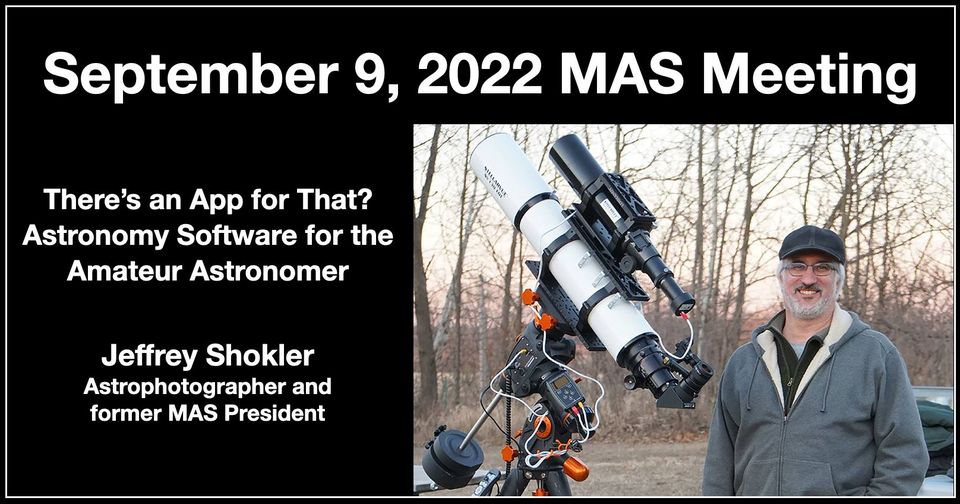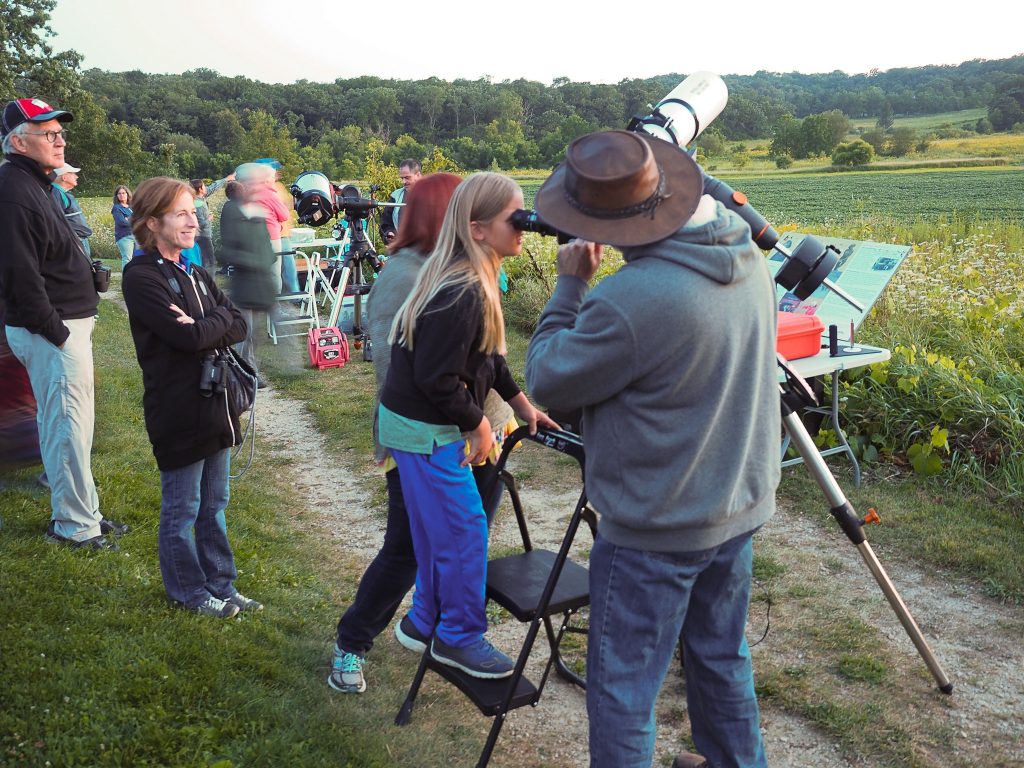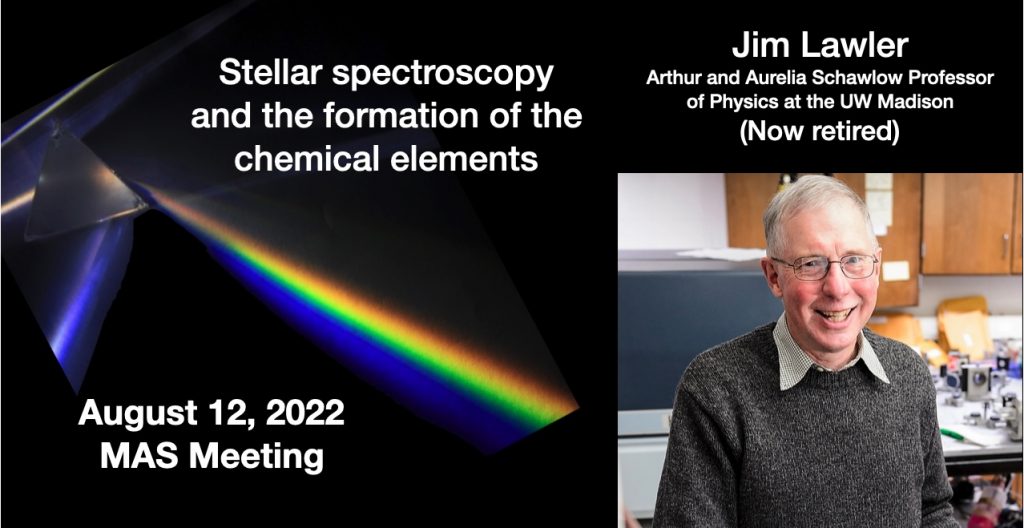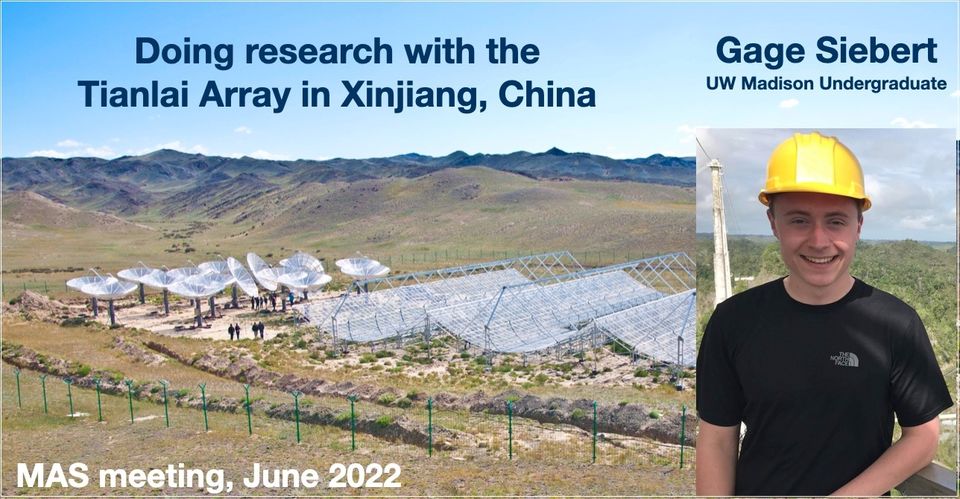Two Talks on Astrophotography
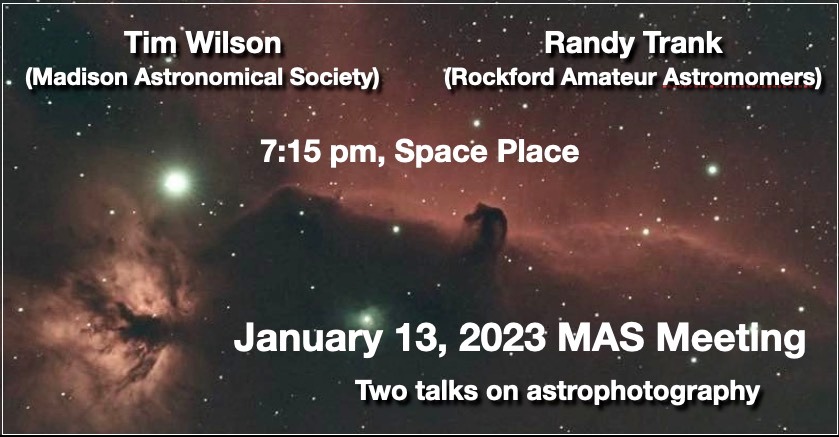
The January MAS meeting will feature a focus on astrophotography with presentations by two experienced practitioners:
Randy Trank on “Lucky Imaging and the Moon”
“Lucky Imaging” is a phrase used for certain types of astrophotography so I’ll explain that and show an example by processing a lunar photo.
Randy’s background:
Randy became interested in astronomy under the dark skies of Lake Ripley when he was 12 with an Edmund Scientific scope. He loved the Apollo missions. Randy has dabbled in astrophotography for 50 years, avoiding the moon. He is now returning to his lunar roots and wishing he hadn’t avoided the moon for so long! Randy is a member of the Rockford Amateur Astronomers.
Tim Wilson on “Data collection, Organization, and...
Read More
